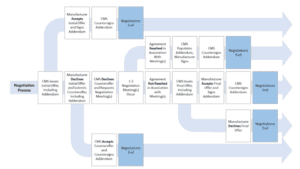How to Diversify your Golf Club

Golf Club membership is down – Stay progressive, stay protected
2023 has brought closures, repurposing, and virtual reality! Here’s how your golf course can adapt:
There has been a reported ‘golf boom’ in 2022/2023, with an increase in golf participation numbers and rounds played. England now accounts for nearly half of all the golf rounds played in Europe. Golf participation is at an all time high, however the story is not the same for golf club membership numbers. There is a distinct disparity between rounds played and member’s numbers, which saw a drop of about 6000 at the start of 2023.
The Hillier Hopkins report highlighted that golf clubs lost members in 2022, and yet 90% of clubs surveyed still planned to increase fees. This was just one of a raft of obstacles blocking membership growth. Issues included an aging membership, declining waiting lists, increased green fees, increased membership fees; among others. Matt Bailey, director at Hillier Hopkins, said the figures showed “golf clubs and their members are not immune to the tightening economic picture”.
What could this mean for golf clubs and their current business model? Golf clubs rely on their membership – fair-weather golfers and visitorship is not going to prevent British golf courses disappearing. How likely are golf clubs to disappear? And what can be done by operators to protect their golf club?
Statistics show golf clubs are disappearing
The stats show, over the course of the last decade, golf course numbers have declined. There are now 150,000 fewer club members than there were in 2004.
A new golf course opening is a rarity. Building a course from scratch is expensive, as is taking over and renovating an old one. Many golf courses have to rent their land from the council, which can be costly, and building up a membership base is exceptionally difficult in the first year of any business, never mind one as exclusive as golf. The new golf courses in Europe peaked in 2014 and has slowly declined.
The stats on rounds played vary greatly due to the pandemic. As reported, in Great Britain, the number of adults actively playing rose from 2.5 million in 2017 to 3 million in 2019, it then surged after COVID, surging to a peak of 5.2 million in 2020. A vast number of lapsed golfers took it back up during and post-pandemic.
But the latest figures show that rounds have declined since 2020. Furthermore, membership numbers are dropping, despite the boom during the pandemic. Since 2021, membership numbers have flattened and the focus for many golf clubs has been retention, as opposed to acquisition. Many golf courses expanded their offering, built new grounds and employed addition members of staff because of the boom. But now golf course are having to cope with recession by cutting staff, and raising green fees. The once stable golf course economy was knocked out of kilter, and golf course directors are struggling to right the ship.
The effect of the cost of living on golf course membership
The decline of membership numbers has steepened to that of the expected attrition levels because of the economic climate in 2023. The cost of living crisis has tightened the belts of consumers, and luxuries such as the retail, hospitality and leisure sectors have suffered.
A report by BRS Golf showed that membership resignations have risen recently, showing not only that customers are cost saving by declining membership renewals, but also perhaps that the membership experience does not reflect the cost. Hillier Hopkins reported that 74% of golf club membership fees are now more than £1,000 a year. That brings the average round of golf for members from £36 to £43.50, and from £84 to £108 for non-members.
Despite this challenge, 92% of clubs plan to increase fees in 2023/2024. If golf clubs must raise fees to stay afloat, then they also could look into improving their member experience.
Climate Change and increased natural disasters affecting golf courses
In all of Europe, England has the highest number of registered golf courses. BBC fact-checkers believe that British golf courses cover 1,256 sq.km, an area roughly equivalent to the whole of Greater Manchester. This land area is, according to some estimates, just a little smaller than the land area of UK housing. With all this space and as an outdoor sport, the weather has a great effect on the success of a golf club.
Heavy rainfall and storms are the impacts of climate change. Temporary closures of courses have been as a result of cliff erosion, for links courses, and flooding of those in-land.
There have been numerous cases this year of courses flooded, including Mond Valley in Swansea, Deeside GC in the North East and most recently Reinshaw Park GC in Sheffield. Reinshaw made national headlines as it had to close due to the devastation.
2023 has been a headache for so many greenkeepers and golf club directors. Extra funds have had to be allocated to greenkeeping equipment, such as fertiliser which has dramatically risen in price due to worldwide hostilities. The behind-the-scenes repercussions often get overlooked by course-goers and fair weather golfers who wonder why green fees keep rising.
Other causes for grounds destruction aside from weather include bikers and trespassers. See our information on How clubs can prevent dirt bikers damaging club grounds.
Is Golf an Aging Sport?
Hillier Hopkins found that 64% of golf club members are aged 50 and over, with 21% of members aged over 70. An aging player-base does not represent a healthy growing sport.
The cost of playing golf poses a barrier for new players. Golf is an expensive sport comparatively to startup. A 30-minute golf lesson is around £30, 6 of these will be needed minimum, as well as shoes, clubs, bag, balls and clothes; put green fees or membership on top and a year’s worth of golf can add up to £2000. The cost may outweigh the benefits for young adults looking to get involved.
It’s also a slower sport with hefty traditions and formalities, one that’s much more suited for the older generation. Those who play know how accessible to sport is for all ages and families, through the handicap system and coloured tees, but to the outside world, golf can seem like a gated community.
Targeting younger members, providing incentives are key areas golf course directors need to focus on to drive growth in 2024 and beyond.
The Rise of Virtual Reality in Golf
In an attempt to drive growth, many golf club businesses have diversified. The Professional Golfers’ Association says that “golf has changed” and that the sport is attracting less well off and “more ethnically diverse” players – but only when the users of alternative golfing experiences such as driving ranges, golf simulators and novelty mini golf-themed bars are taken into account.
Foot-golf adaptations or mini-golf facilities are commonplace at large golf clubs. Some golf clubs have added gym and swim facilities. Much of this has been absorbed within the golf club membership, widening the target audience.
Virtual or augmented reality has seen a positive increase. With video gaming culture ever-growing, venues such as Topgolf or DriveShack have snapped up that market. Businesses such as ProFlight Golf offer augmented reality services to golf courses who are looking to improve their indoor facilities. Tiger Woods and Rory McIlroy’s new virtual golf league brings all this to ahead, taking professional golf into a different universe. TGL is a tech-infused league, something more akin to e-sports than walking miles round a park, and perhaps area to be investigated by progressive golf directors.
Club Insure will Protect our Golf Clubs
It is Clubs Insure’s mission to protect golf clubs. We are on the side of golf directors, helping them navigate the insurance world, and achieve insurance terms that works for them. Our tailored service is trusted by the best and the brightest golf clubs in the UK.
Golf clubs clients who want to increase their grounds, facilities or services, please contact us and let’s work together to find the best insured solution.
Our claims record is excellent. We have an excellent track record of finding solutions for clubs. No golf club is too big or too small for Club Insure, the no.1 UK club insurer.
We understand the need for golf clubs to diversify and grow, and we will not stand in your way. We want to work closely with owners to understand what they require and find a risk-adverse solution.
Where many brokers create obstacles, we help you get over them. Our team provide a dedicated individual service, getting to know the specifics of you and your club. Using our connections in the insurance world we promise to provide better, more adequate cover.
Give our representatives a call today to find out how we can help you receive better terms.
See what our Clients say about us:
Club Insure sat down with Mark Moore, General Manager of Moor Allerton Golf Club who spoke openly about the unprecedented challenges golf clubs are currently facing. He also notes a past claim Moor Allerton Golf Club dealt with and the excellent support he received from Club Insure.
See more on what Mark Moore has to say about Golf Club Management here.






